30 Best Colleges for Astronomy & Astrophysics – 2024
April 5, 2024

If you have a brilliant scientific mind that has always been fixated on topics along the lines of black holes, dark matter, and extraterrestrial life then there may just be a college program for you. Sometimes offered as a solo Astronomy & Astrophysics major (i.e. Michigan), other times as an Astronomy-Physics double-major (i.e. UVA), and other times as a concentration area within the Astronomy department (i.e. BU), this rigorous major will take undergraduates through advanced study of mathematics, physics, astronomy, and chemistry. Many graduates of Astronomy & Astrophysics programs go on to complete graduate studies and those with PhDs hold research positions at universities or government agencies like NASA. Others pursue jobs in computing where their skills prove quite useful, including at tech giants like Google, Meta, or Microsoft. Our list of Best Colleges for Astrophysics & Best Colleges for Astronomy will help you navigate through the infinite universe of the higher education search process and discover the perfect academic galaxy to call home.
Methodology
Click here to read our methodology for the Best Colleges Astronomy & Astrophysics.
Best Colleges for Astronomy & Astrophysics
Here’s a quick preview of the first ten Astronomy & Astrophysics institutions that made our list. Detailed profiles and stats can be found when you scroll below.
1) University of Chicago
2) California Institute of Technology
3) Harvard University
4) Princeton University
5) Columbia University in the City of New York
6) University of California-Los Angeles
7) University of California-Berkeley
8) University of California-Santa Cruz
9) Swarthmore College
10) Whitman College
All of the schools profiled below have stellar reputations in the fields of astronomy & astrophysics and commit substantial resources to undergraduate education. For each of the best artificial intelligence colleges, College Transitions will provide you with—when available—each school’s:
We will also include a longer write-up of each college’s:
-
- Academic Highlights – Includes facts like student-to-faculty ratio, average class size, number of majors offered, and most popular majors.
- Professional Outcomes – Includes info on the rate of positive outcomes, companies employing alumni, and graduate school acceptances.
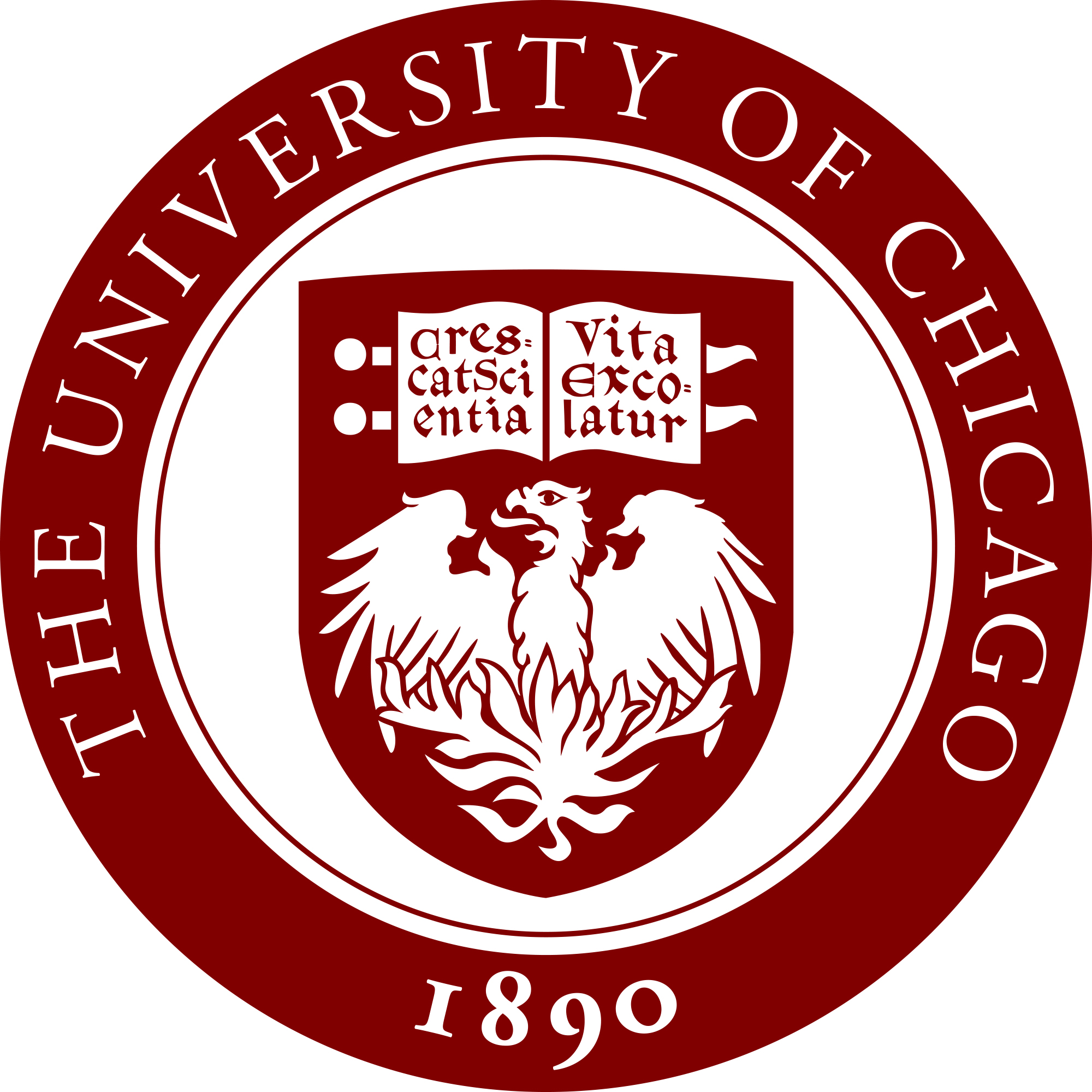
University of Chicago
- Chicago, IL
Academic Highlights: There are 53 majors at UChicago, but close to half of all degrees conferred are in four majors: economics, biology, mathematics, and political science, all of which have particularly sterling reputations. Economics alone is the selection of roughly one-fifth of the undergraduate population. Over 75% of undergrad sections have an enrollment of nineteen or fewer students, and undergraduate research opportunities are ubiquitous as 80% of students end up working in a research capacity alongside a faculty member.
Professional Outcomes: On commencement day, 99% of the Class of 2023 were employed or continuing their education. Business and financial services (30%) and STEM (12%) were the two sectors that scooped up the most graduates, but public policy and consulting were also well-represented. The most popular employers of recent grads include Google, JPMorgan, Goldman Sachs, McKinsey & Company, Bank of America, Citi, and Accenture. For those heading to grad school, the top seven destinations are Yale, Columbia, Penn, MIT, Stanford, UCLA, and Johns Hopkins.
- Enrollment: 7,653 (undergraduate); 10,870 (graduate)
- Cost of Attendance: $89,040
- Median SAT: 1540
- Median ACT: 35
- Acceptance Rate: 5%
- Retention Rate: 99%
- Graduation Rate: 96%
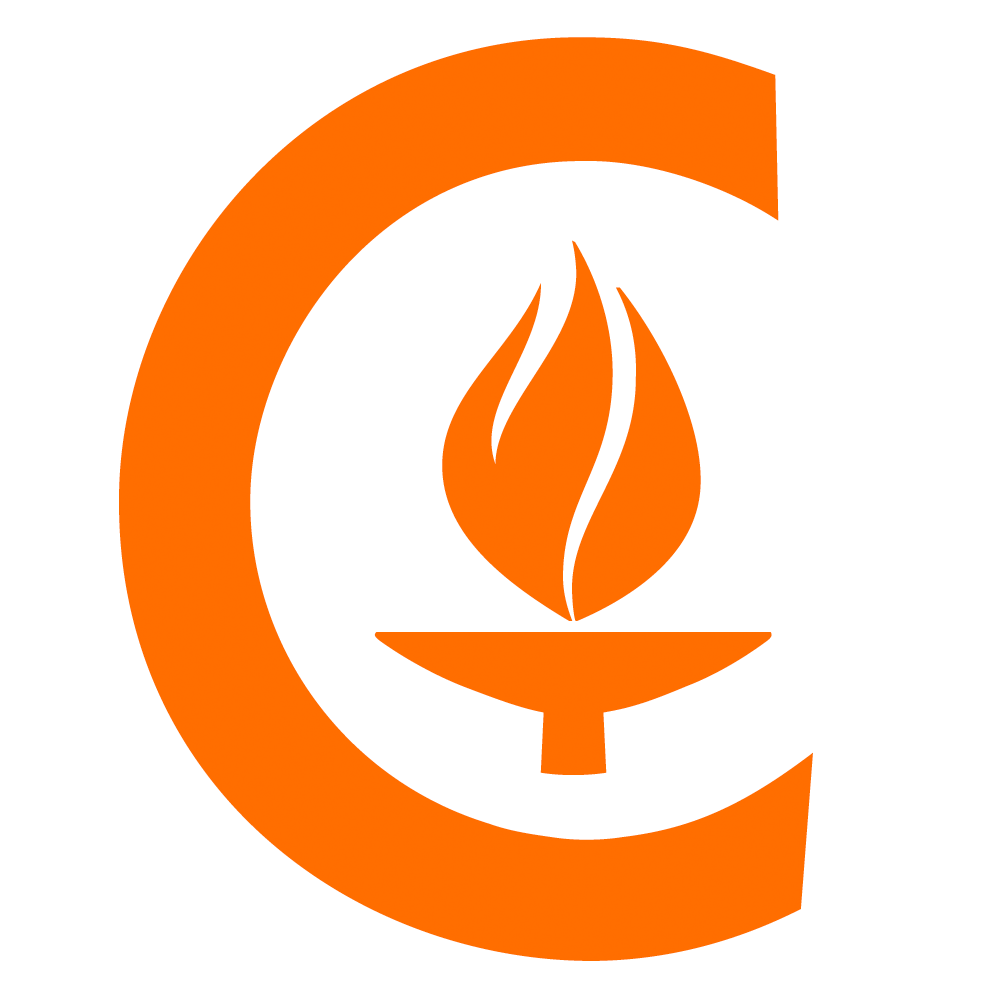
California Institute of Technology
- Pasadena, CA
Academic Highlights: Across all divisions, there are 28 distinct majors. Possessing an absurdly favorable 3:1 student-to-faculty ratio, plenty of individualized attention is up for grabs. Class sizes are not quite as tiny as the student-to-faculty ratio might suggest, but 70% of courses enroll fewer than twenty students, and 28% enroll fewer than ten. Computer science is the most popular major, accounting for 38% of all degrees conferred. Engineering (30%), the physical sciences (20%), and mathematics (6%) also have strong representation.
Professional Outcomes: Caltech is a rare school that sees six-figure average starting salaries for its graduates; in 2022, the median figure was $120,000. Forty-three percent of recent grads went directly into the workforce and found homes at tech giants such as Google, Intel, Microsoft, Apple, and Meta. A healthy 46% of those receiving their diplomas in 2022 continued directly on the higher education path, immediately entering graduate school. Ninety-seven percent of these students were admitted to one of their top-choice schools.
- Enrollment: 982
- Cost of Attendance: $86,886
- Median SAT: Test Blind
- Median ACT: Test Blind
- Acceptance Rate: 3%
- Retention Rate: 98%
- Graduation Rate: 94%
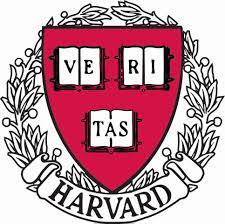
Harvard University
- Cambridge, MA
Academic Highlights: There are 50 undergraduate fields of study referred to as concentrations; many are interdisciplinary. Even with a graduate population of over 14,000 to cater to, undergraduate class sizes still tend to be small, with 42% of sections having single-digit enrollments and 71% being capped at nineteen. Economics, government, and computer science are the three most popular areas of concentration at Harvard. Biology, chemistry, physics, math, statistics, sociology, history, English, and psychology all sit atop most departmental ranking lists.
Professional Outcomes: The Crimson Class of 2022 saw 15% of students head directly into graduate/professional school. Of the graduates entering the world of work (virtually everyone else), 58% were entering either the consulting, finance, or technology field. Over 1,000 Harvard alumni presently work for Google and over 500 for Microsoft, McKinsey & Company, and Goldman Sachs. Turning our attention to those moving on to graduate school, Harvard grads with at least a 3.5 GPA typically enjoy acceptance rates into medical school of 90% or greater.
- Enrollment: 7,240
- Cost of Attendance: $79,450
- Median SAT: 1550
- Median ACT: 35
- Acceptance Rate: 3%
- Retention Rate: 98%
- Graduation Rate: 98%

Princeton University
- Princeton, NJ
Academic Highlights: 39 majors are available at Princeton. Just under three-quarters of class sections have an enrollment of 19 or fewer students, and 31% have fewer than ten students. Princeton is known for its commitment to undergraduate teaching, and students consistently rate professors as accessible and helpful. The Engineering Department is widely recognized as one of the country’s best, as is the School of Public and International Affairs.
Professional Highlights: Over 95% of a typical Tiger class finds their next destination within six months of graduating. Large numbers of recent grads flock to the fields of business and engineering, health/science, & tech. Companies presently employing hundreds of Tiger alumni include Google, Goldman Sachs, Microsoft, McKinsey & Company, Morgan Stanley, IBM, and Meta. The average salary ranges from $40k (education, health care, or social services) to $100k (computer/mathematical positions). Between 15-20% of graduating Tigers head directly to graduate/professional school.
- Enrollment: 5,604 (undergraduate); 3,238 (graduate)
- Cost of Attendance: $86,700
- Median SAT: 1540
- Median ACT: 35
- Acceptance Rate: 6%
- Retention Rate: 97%
- Graduation Rate: 98%
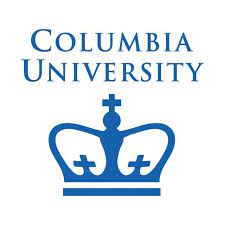
Columbia University
- New York, NY
Academic Highlights: Columbia offers 100+ unique areas of undergraduate study as well as a number of pre-professional and accelerated graduate programs. Class sizes at Columbia are reasonably small and the student-to-faculty ratio is favorable; however, in 2022, it was revealed that the university had been submitting faulty data in this area. It is presently believed that 58% of undergraduate courses enroll 19 or fewer students. The greatest number of degrees are conferred in the social sciences (22%), computer science (15%), engineering (14%), and biology (7%).
Professional Outcomes: Examining the most recent graduates from Columbia College and the Fu Foundation School of Engineering & Applied Science, 73% had found employment within six months, and 20% had entered graduate school. The median starting salary for graduates of Columbia College/Columbia Engineering is above $80,000. Many graduates get hired by the likes of Amazon, Goldman Sachs, Morgan Stanley, Google, Citi, McKinsey, and Microsoft.
- Enrollment: 8,832
- Cost of Attendance: $89,587
- Median SAT: 1540
- Median ACT: 35
- Acceptance Rate: 4%
- Retention Rate: 98%
- Graduation Rate: 95%

University of California, Los Angeles
- Los Angeles, CA
Academic Highlights: UCLA offers 125 majors in 100+ academic departments, and more than 60 majors require a capstone experience that results in the creation of a tangible product under the mentorship of faculty members. The most commonly conferred degrees are in the social sciences (25%), biology (16%), psychology (11%), mathematics (8%), and engineering (7%). Departmental rankings are high across the board, especially in computer science, engineering, film, fine and performing arts, mathematics, and political science.
Professional Outcomes: UCLA grads flow most heavily into the research, finance, computer science, and engineering sectors. High numbers of recent grads can be found at Disney, Google, EY, Teach for America, Amazon, and Oracle. Hundreds also can be found at Bloomberg, Deloitte, Mattel, Oracle, and SpaceX. The average starting salary exceeds $55,000. 16% of recent grads enrolled directly in a graduate/professional school, with other CA-based institutions like Stanford, Pepperdine, USC, Berkeley, and Loyola Marymount being the most popular.
- Enrollment: 33,040 (undergraduate); 15,010 (graduate)
- Cost of Attendance: $38,517 (in-state); $71,091 (out-of-state)
- Median SAT: Test Blind
- Median ACT: Test Blind
- Acceptance Rate: 9%
- Retention Rate: 97%
- Graduation Rate: 93%
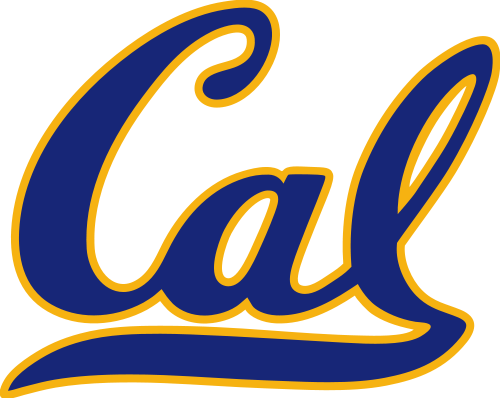
University of California, Berkeley
- Berkeley, CA
Academic Highlights: More than 150 undergraduate majors and minors are available across six schools: the College of Letters and Science, the College of Chemistry, the College of Engineering, the College of Environmental Design, the College of Natural Resources, and the Haas School of Business. Many departments have top international reputations including computer science, engineering, chemistry, English, psychology, and economics. 22% of sections contain nine or fewer students, and over 55% of students assist faculty with a research project or complete a research methods course.
Professional Outcomes: Upon graduating, 49% of Cal’s Class of 2022 had already secured employment, and 20% were headed to graduate school. Business is the most popular sector, attracting 62% of employed grads; next up are industrial (17%), education (8%), and nonprofit work (7%). The median starting salary was $86,459 across all majors. Thousands of alumni can be found in the offices of Google, Apple, and Meta, and 500+ Golden Bears are currently employed by Oracle, Amazon, and Microsoft. The school is the number one all-time producer of Peace Corps volunteers.
- Enrollment: 32,831 (undergraduate); 12,914 (graduate)
- Cost of Attendance: $48,574 (in-state); $82,774 (out-of-state)
- Median SAT: Test Blind
- Median ACT: Test Blind
- Acceptance Rate: 11%
- Retention Rate: 96%
- Graduation Rate: 94%
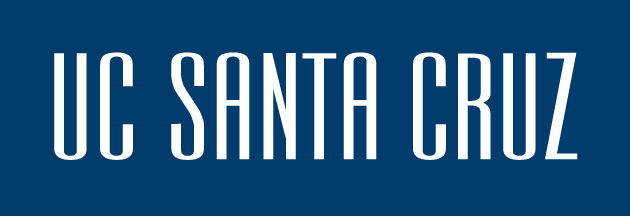
University of California, Santa Cruz
- Santa Cruz, CA
Academic Highlights: 73 undergraduate majors are available at UCSC within the following academic divisions: arts, humanities, physical and biological sciences, social sciences, and the Jack Baskin School of Engineering. 75% of undergraduates conduct research during their four years. Biology is the university’s most popular major; 15% of all degrees conferred in 2022 were in this discipline. 14% of degrees were granted in the social sciences, 13% in computer and information sciences, and 12% in psychology. CS is one of UCSC’s most respected programs.
Professional Outcomes: Within three months of earning their degree, 29% of UCSC grads had found employment and 17% started graduate programs. Proximity to Silicon Valley helps open doors to companies like Google, Apple, Meta, Genentech, and Cisco, which all employ over 250 alumni. More than 100 alums can also be found in the offices of Amazon, Salesforce, Microsoft, Adobe, and LinkedIn. Among graduates from the last five years, over half make more than $40k.
- Enrollment: 17,502 (undergraduate); 1,976 (graduate)
- Cost of Attendance: $41,283 (in-state); $73,857 (out-of-state)
- Median SAT: Test Blind
- Median ACT: Test Blind
- Acceptance Rate: 63%
- Retention Rate: 88%
- Graduation Rate: 77%

Swarthmore College
- Swarthmore, PA
Academic Highlights: Swarthmore offers forty undergraduate programs and runs 600+ courses each academic year. Small, seminar-style courses are the norm—an outstanding 33% of sections enroll fewer than ten students, and 70% contain a maximum of nineteen students. Social science degrees are the most commonly conferred, accounting for 24% of all 2022 graduates. Future businessmen/women, engineers, and techies are also well-positioned, given Swat’s incredibly strong offerings in economics, engineering, and computer science.
Professional Outcomes: 68% of Class of 2022 grads entered the workforce shortly after graduation. Popular industries included education (17%), consulting (16%), and financial services (13%); the median starting salary was $60,000. Google is a leading employer of Swarthmore grads followed by Amazon, Goldman Sachs, IBM, and a number of the top universities. 18% of 2022 grads pursued advanced degrees, with 35% pursuing a PhD, 35% entering master’s programs, 10% heading to law school, and 7% matriculating into medical school.
- Enrollment: 1,625
- Cost of Attendance: $81,376
- Median SAT: 1500
- Median ACT: 33
- Acceptance Rate: 7%
- Retention Rate: 96%
- Graduation Rate: 94%

Whitman College
- Walla Walla, WA
Academic Highlights: With 51 majors and 35 minors, the academic offerings at Whitman are robust. Biology, politics, and economics are especially renowned, and the greatest number of degrees are typically conferred in the social sciences (22%), biology (15%), psychology (9%), and the visual and performing arts (9%). Undergraduate research is embedded into the foundation of a Whitman education, and with a 9:1 student-to-faculty ratio, professors have a reputation for being extremely available and attentive.
Professional Outcomes: After graduation, 64% of Whitman grads immediately begin their careers and 20% enroll directly in graduate programs. Twenty or more alumni currently work for Microsoft, Amazon, Boeing, Starbucks, T-Mobile, and Nordstrom. In the last few years, interesting first jobs included a paralegal at the US Department of Justice-Antitrust Division, an audio archivist at the Smithsonian, and a marketing assistant at Oxford University Press. Ultimately, 60% of alumni go on to earn advanced degrees at some point post-graduation, and the school is a top producer of PhDs.
- Enrollment: 1,493
- Cost of Attendance: $77,532
- Median SAT: 1385
- Median ACT: 32
- Acceptance Rate: 48%
- Retention Rate: 88%
- Graduation Rate: 90%

Carnegie Mellon University
- Pittsburgh, PA
Academic Highlights: There are a combined 80+ undergraduate majors and 90 minors available across the six schools. Impressively, particularly for a school with more graduate students than undergrads, CMU boasts a 6:1 student-to-faculty ratio and small class sizes, with 36% containing single digits. In a given school year, 800+ undergraduates conduct research through the University Research Office. The most commonly conferred degrees are in engineering (21%), computer science (16%), mathematics (12%), business (10%), and visual and performing arts (9%).
Professional Outcomes: By the end of the calendar year in which they received their diplomas, 66% of 2022 grads were employed, and 28% were continuing to graduate school. The companies that have routinely scooped up CMU grads include Google, Meta, Microsoft, Apple, Accenture, McKinsey, and Deloitte. With an average starting salary of $105,194, CMU grads outpace the average starting salary for a college grad nationally. Of those pursuing graduate education, around 20% typically enroll immediately in PhD programs.
- Enrollment: 7,509
- Cost of Attendance: $84,412
- Median SAT: 1540
- Median ACT: 35
- Acceptance Rate: 11%
- Retention Rate: 97%
- Graduation Rate: 92%

University of Colorado Boulder
- Boulder, CO
Academic Highlights: CU Boulder offers 90 bachelor’s degree programs across seven different schools and colleges; the College of Engineering & Applied Science and the Leeds School of Business both possess excellent national reputations. Business/marketing is the discipline where the greatest number of degrees (15%) were conferred in 2022. Engineering (13%), biology (12%), social sciences (12%), and journalism (10%) are next in popularity. 41% of classes have fewer than 20 students, and only 19% of courses enroll 50 or more students.
Professional Outcomes: Within six months of leaving CU Boulder, 91% of recent grads were working or in graduate school. Those employed earned an estimated median salary of $54k, with the greatest number working at Lockheed Martin, Ball Aerospace, Deloitte, Qualcomm, Northrop Grumman, KPMG, Charles Schwab, and Boeing. More than 100 alumni can also be found at Google, Oracle, Amazon, Apple, and Microsoft. 20% of new grads immediately jumped into an advanced degree program, and 80% were accepted into their first-choice school.
- Enrollment: 31,103 (undergraduate); 7,110 (graduate)
- Cost of Attendance: $31,744 (in-state); $60,118 (out-of-state)
- Median SAT: 1280
- Median ACT: 29
- Acceptance Rate: 79%
- Retention Rate: 88%
- Graduation Rate: 75%

University of Maryland, College Park
- College Park, MD
Academic Highlights: Undergraduates can select from 100+ majors across twelve colleges. 18% of degrees are conferred in computer science, followed by the social sciences (13%), with criminology, government and politics, and economics being the most popular majors. Engineering (13%), business (11%), and biology (8%) are next in line. The School of Business, the School of Engineering, and the College of Journalism are all top-ranked, as are programs in computer science and criminology. 46% of sections enroll fewer than twenty students.
Professional Outcomes: Within six months of graduating, 96% of Class of 2022 grads had positive outcomes. 67% found employment; the companies/organizations that hired the greatest number of grads included Northrop Grumman, Deloitte, Amazon, and EY. Meta, Apple, and Google employ more than 200 alumni each. The mid-50% salary range for 2022 grads was $55k-$83k. 21% of the Class of 2022 headed directly to graduate and professional school; 11% entered doctoral programs, 5% entered medical school, and 5% entered law school.
- Enrollment: 30,353 (undergraduate); 10,439 (graduate)
- Cost of Attendance: $31,540 (in-state); $60,918 (out-of-state)
- Median SAT: 1440
- Median ACT: 33
- Acceptance Rate: 84%
- Retention Rate: 95%
- Graduation Rate: 89%
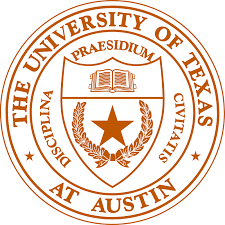
The University of Texas at Austin
- Austin, TX
Academic Highlights: UT Austin offers over 150 majors, including those at the Cockrell School of Engineering, one of the most heralded undergraduate engineering schools around, and The McCombs School of Business, which dominates in the specialty areas of accounting and marketing. The computer science department is also top-ranked. In terms of degrees conferred, engineering is tied with biology (12%) followed by communication (11%), business (11%), and the social sciences (8%). The elite Plan II Honors Program is one of the best in the country.
Professional Outcomes: Within the College of Liberal Arts, six months after graduating, 68% of Longhorns are employed and 24% have entered graduate school. The for-profit sector attracts 65% of those employed while 19% enter public sector employment and 16% pursue jobs at a nonprofit. Major corporations that employ more than 500 UT Austin grads include Google, Meta, Oracle, Microsoft, IBM, and Apple. Engineering majors took home a median income of $79k and business majors took home $70k.
- Enrollment: 41,309 (undergraduate); 11,075 (graduate)
- Cost of Attendance: $30,752-$34,174 (in-state); $61,180-$69,310 (out-of-state)
- Median SAT: 1430
- Median ACT: 32
- Acceptance Rate: 31%
- Retention Rate: 95%
- Graduation Rate: 88%

University of Washington – Seattle
- Seattle, WA
Academic Highlights: 180+ undergraduate majors are offered across thirteen colleges/schools. Personal connections with professors abound as 55% of grads complete a faculty-mentored research project. The College of Engineering, which includes the College of Computer Science & Engineering, is one of the best in the nation; UW also boasts strong programs in everything from business to social work to environmental science. The most popular degrees are the social sciences (13%), biology (12%), computer science (11%), and business (8%).
Professional Outcomes: Within months of graduation, 73% of Class of 2022 grads were employed and 17% were continuing their education. The most popular employers of the Class of 2022 included Google, Amazon, Microsoft, Boeing, and KPMG. Across all living alumni, 6,000+ work for Microsoft, and 4000+ work for each of Boeing and Amazon. Of those headed to graduate/professional school, just over half remain in state, mostly at UW itself. Large numbers of 2022 grads also headed to Columbia, Johns Hopkins, and USC.
- Enrollment: 36,872 (undergraduate); 16,211 (graduate)
- Cost of Attendance: $34,554 (in-state); $63,906 (out-of-state)
- Median SAT: 1420
- Median ACT: 32
- Acceptance Rate: 48%
- Retention Rate: 94%
- Graduation Rate: 84%

Wesleyan University
- Middletown, CT
Academic Highlights: With 45 majors and 32 minors, Wes truly has something for everyone. The academic requirements are relatively minimal, giving undergrads a high degree of intellectual freedom. Under 75% of class sections have fewer than twenty students; students rave about the accessible faculty. Research opportunities with professors are plentiful. Offerings in economics, English, film studies, and neuroscience typically receive the most praise from employers/grad schools; accordingly, the social sciences (24%), psychology (17%), and the visual and performing arts (12%) are the most popular.
Professional Outcomes: Within six months of graduating, 66% of 2022 grads had entered employment, with tech/engineering/sciences, education, and arts/entertainment being the three top sectors. The companies employing the highest numbers of recent Wesleyan grads included Google, Epic, Analysis Group, Boston Medical Center, Booz Allen Hamilton, Accenture, and Apple. Graduate school was the next stop for 18% of new alums; enrolling institutions included MIT, Stanford, Berkeley, Yale, Harvard, Temple, and UMass.
- Enrollment: 3,069 (undergraduate); 184 (graduate)
- Cost of Attendance: $89,094
- Median SAT: 1430
- Median ACT: 32
- Acceptance Rate: 14%
- Retention Rate: 95%
- Graduation Rate: 93%

Williams College
- Williamstown, MA
Academic Highlights: The school’s 25 academic departments offer 36 majors and a number of concentrations rather than minors. An unparalleled 40% of courses have fewer than ten students enrolled; the median class size is 12 students. Programs in economics, English, history, math, and political science are especially renowned, and the greatest number of degrees are conferred in the social sciences (26%), the physical sciences (10%), math and statistics (9%), psychology (9%), and computer science (7%).
Professional Outcomes: Among the Class of 2022, 92% were employed or continuing their educational journey within six months of graduating. Business and education typically attract the most students, with popular companies/organizations including Apple, Google, Goldman Sachs, The New York Times Co., the Peace Corps, and Teach for America. The median annual income for 2022 grads was $75,000. 75% pursue an advanced degree within five years of leaving Williams, with the most frequently attended graduate programs being Harvard, Columbia, and Yale.
- Enrollment: 2,152 (undergraduate); 53 (graduate)
- Cost of Attendance: $81,160
- Median SAT: 1520
- Median ACT: 35
- Acceptance Rate: 8%
- Retention Rate: 97%
- Graduation Rate: 95%
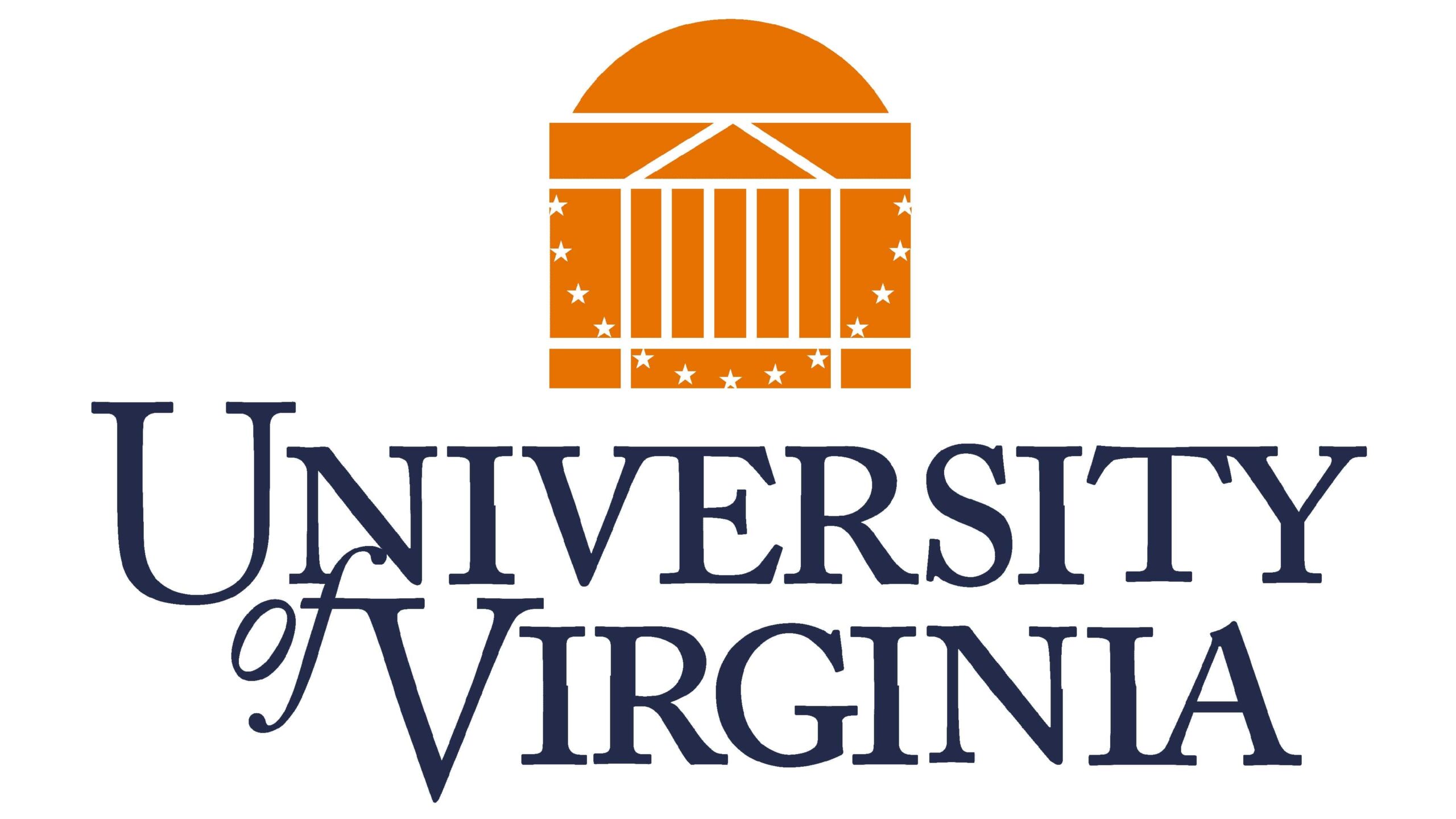
University of Virginia
- Charlottesville, VA
Academic Highlights: Undergrads can study within one of seven colleges/schools, which all offer many small classes; 15% boast single-digit enrollment and 48% contain 19 or fewer students. The McIntire School of Commerce and the School of Engineering and Applied Science have glowing reputations. Other notable strengths include computer science, economics, and political philosophy, policy, and law. The most popular degree areas are liberal arts/general studies (22%), the social sciences (14%), engineering (11%), business/marketing (8%), and biology (7%).
Professional Outcomes: Upon receiving their degree, 95% of the Class of 2022 immediately joined the workforce–with an average starting salary of $90k–or headed directly to graduate school. The most popular industries were internet & software, higher education, and management consulting. Capital One (85), Deloitte (46), Amazon (38), and Bain & Co. (26) scooped up the greatest number of 2022 grads. UVA itself was the most popular grad school destination followed by Columbia, Virginia Commonwealth University, and Johns Hopkins.
- Enrollment: 17,496 (undergraduate); 8,653 (graduate)
- Cost of Attendance: $39,494-49,874 (in-state); $78,214-90,378 (out-of-state)
- Median SAT: 1470
- Median ACT: 33
- Acceptance Rate: 19%
- Retention Rate: 97%
- Graduation Rate: 95%
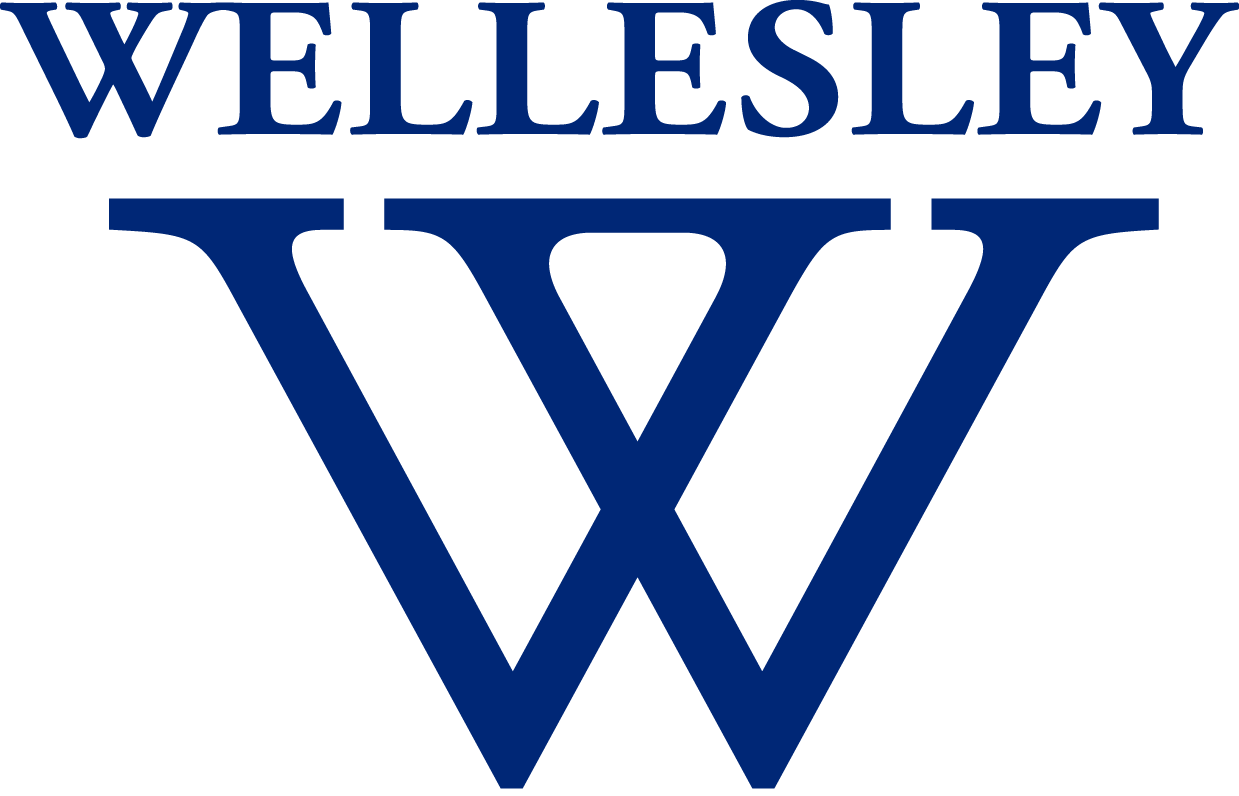
Wellesley College
- Wellesley, MA
Academic Highlights: There are 50+ departmental and interdisciplinary majors. Thirty-six percent of course sections have single-digit enrollments while 77% have 19 or fewer students. In addition, opportunities for participation in research with faculty members abound. Most programs possess sterling reputations, including chemistry, computer science, neuroscience, and political science, but the Department of Economics shines most brightly, leading many into PhD programs and high-profile careers. Economics, biology, and computer science are the most frequently conferred degrees.
Professional Outcomes: Six months after graduating, 97% of the Class of 2022 had achieved positive outcomes. Of the 76% of grads who were employed, 24% were working in the finance/consulting/business fields, 17% in education, 17% in internet and technology & engineering, and 15% in healthcare/life sciences. Top employers included JPMorgan Chase, Google, Boston Children’s Hospital, and Goldman Sachs. The average starting salary for one recent cohort was a solid $63k. Of the 20% of 2022 grads who directly entered an advanced degree program, common schools attended included Harvard, Columbia, Brown, Stanford, MIT, and Emory.
- Enrollment: 2,447
- Cost of Attendance: $84,240
- Median SAT: 1490
- Median ACT: 34
- Acceptance Rate: 14%
- Retention Rate: 95%
- Graduation Rate: 90%
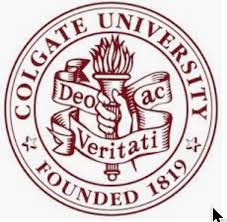
Colgate University
- Hamilton, NY
Academic Highlights: Fifty-six majors are on tap at Colgate, including all of the expected liberal arts concentrations. With a student-faculty ratio of 9:1 and an average class size of 16, Colgate undergraduates work intimately with their instructors. The social sciences account for 35% of all degrees conferred and, within that umbrella, economics, political science, and English are among the most popular and most well-regarded majors.
Professional Outcomes: Nine months after graduation, only a small number of Colgate alumni are still looking for work; in 2022, that group represented less than 2% of the graduating class. A substantial 80% had already landed full-time jobs. Employers hiring the most Colgate grads included BOA, Merrill Lynch, JP Morgan, EY, Wayfair, and the NIH. 85-95% of law school applicants are accepted into one of their target institutions. The medical school numbers were even more impressive with 100% of graduating seniors gaining acceptance into at least one med school.
- Enrollment: 3,130
- Cost of Attendance: $83,814
- Median SAT: 1470
- Median ACT: 33
- Acceptance Rate: 12%
- Retention Rate: 94%
- Graduation Rate: 91%

Vassar College
- Poughkeepsie, NY
Academic Highlights: Vassar students have the choice of 50 majors and only three foundational curricular mandates, which means that there is plenty of room to explore electives and intellectual passions. A 7:1 student-to-faculty ratio leads to an average class size of 17 students, and 23% of all sections have an enrollment of nine or fewer. Professors are extremely available outside the classroom. The most popular majors are in the social sciences, biology, the visual and performing arts, foreign languages, and psychology.
Professional Outcomes: 93% of alums enjoy positive outcomes within six months of graduation, with 20% enrolling directly in a graduate or professional degree program. A solid number land at competitive companies like Google, Meta, EY, Deloitte, Microsoft, Citi, and Amazon. Elite universities such as Harvard, Penn, NYU, and Columbia are also among the top employers of former students, many of whom earn advanced degrees and enter academia. The school is one of the top 15 PhD producers.
- Enrollment: 2,459
- Cost of Attendance: $85,220
- Median SAT: 1480
- Median ACT: 33
- Acceptance Rate: 19%
- Retention Rate: 94%
- Graduation Rate: 92%

Rice University
- Houston, TX
Academic Highlights: Rice offers more than 50 majors across six broad disciplines: engineering, architecture, music, social science, humanities, and natural science. Programs in biology, biochemistry, cognitive science, and music are incredibly strong, while the School of Architecture and the George R. Brown School of Engineering are among the highest-ranking schools in their disciplines. One-third of computer science majors are female, almost twice the national average. Class sizes are ideally small with 66% containing fewer than 20 students and a median class size of only fourteen.
Professional Outcomes: Six months after graduation, 88% of Rice grads have found careers or a graduate school home. Companies that employ many recent grads include Deloitte, Capital One, JP Morgan Chase, Google, and Microsoft. Over one hundred alumni are also current employees of companies such as Shell, ExxonMobil, Chevron, Amazon, Accenture, and Meta. Across all majors, the average starting salary is $73k. One-third of graduates move directly into graduate or professional school, with Harvard, Yale, Stanford, MIT, Columbia, and Berkeley being the most popular destinations.
- Enrollment: 4,494 (undergraduate); 4,178 (graduate)
- Cost of Attendance: $78,278
- Median SAT: 1530
- Median SAT: 35
- Acceptance Rate: 9%
- Retention Rate: 94%
- Graduation Rate: 98%

Haverford College
- Haverford, PA
Academic Highlights: Haverford offers 31 majors, 32 minors, 12 concentrations, and eleven consortium programs—areas of study that can be pursued at partner campuses. The school’s 9:1 student-to-faculty ratio and exclusive emphasis on undergraduate education lead to exceptionally intimate classes, 33% of which have fewer than 10 students, and 72% have fewer than 20. The most popular areas of study at Haverford include the social sciences (24%), biology (14%), psychology (11%), physical sciences (10%), computer science (9%), and mathematics (7%).
Professional Outcomes: Six months after leaving Haverford, 63% of the Class of 2022 had found employment, 19% had enrolled in graduate school, and 9% were still job hunting. Employers hiring multiple recent Haverford grads include Epic, JP Morgan Chase Bank, Boston Consulting Group, Goldman Sachs, the National Institutes of Health, and the Children’s Hospital of Philadelphia. Of the 19% of 2022 grads who elected to continue their education, the most commonly entered fields of study were STEM (51%) and medicine/health (15%).
- Enrollment: 1,421
- Cost of Attendance: $87,180
- Median SAT: 1490
- Median ACT: 34
- Acceptance Rate: 14%
- Retention Rate: 96%
- Graduation Rate: 91%
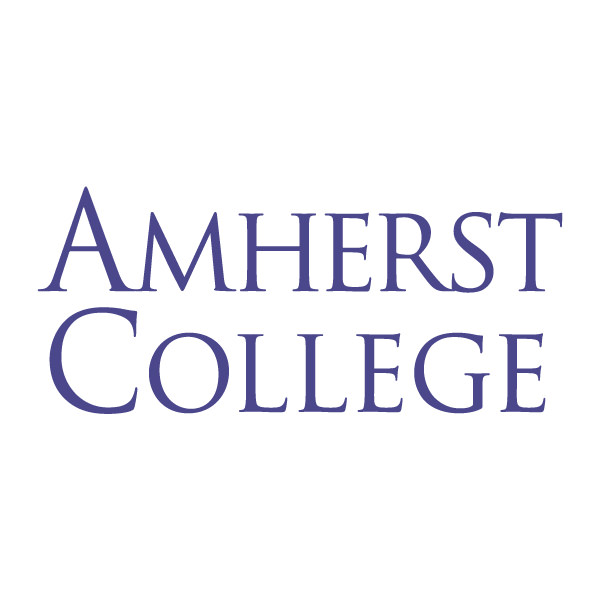
Amherst College
- Amherst, MA
Academic Highlights: A 7:1 student-to-faculty ratio allows for 66% of courses to have fewer than twenty students and 32% to have single-digit enrollments. By senior year, 98% of seniors report feeling close enough to a faculty member to ask for a letter of recommendation. Amherst possesses strong offerings across the board, most notably in economics, English, history, mathematics, and law The social sciences account for 22% of degrees conferred, while 14% are in mathematics, 11% in biology, and 7% in computer science
Professional Outcomes: Six months after graduation, 93% of the Class of 2022 had already found its way into the world of employment, graduate school, or a volunteer organization. The largest employers of Amherst grads includes Google, Deloitte, Morgan Stanley, and Goldman Sachs. The schools where the highest number of Amherst grads can be found pursuing advanced degrees include MIT, Dartmouth, and the University of Pennsylvania. Fifty to sixty Amherst grads apply to medical school each year, and the acceptance rate hovers around 75-80%.
- Enrollment: 1,898
- Cost of Attendance: $84,840
- Median SAT: 1520
- Median ACT: 34
- Acceptance Rate: 7%
- Retention Rate: 95%
- Graduation Rate: 92%
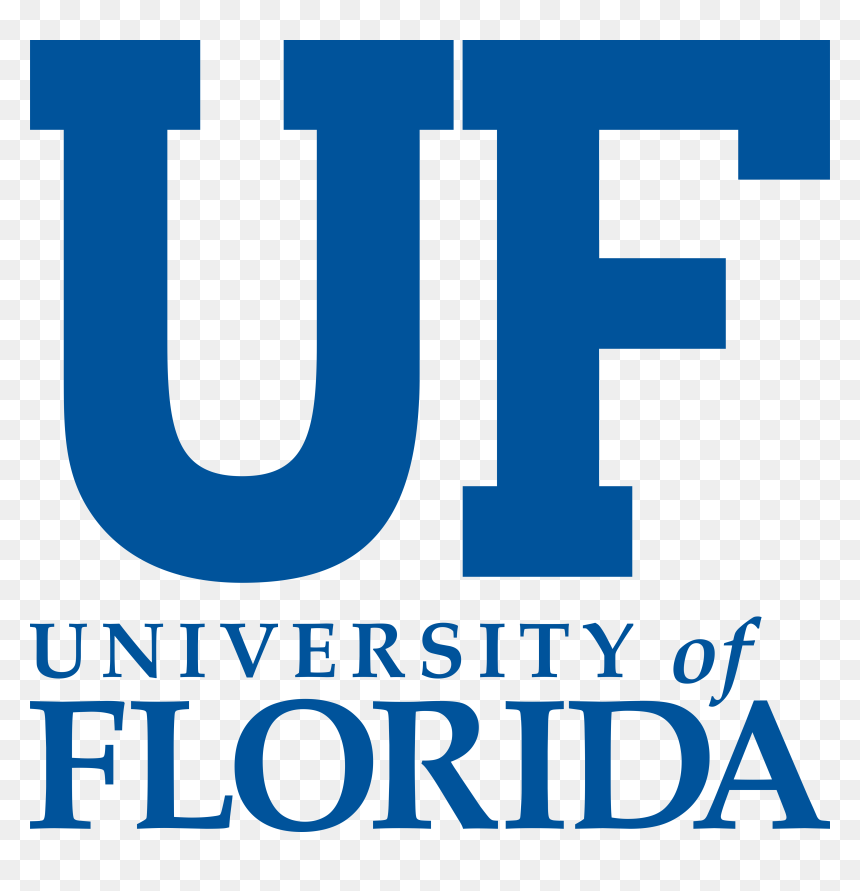
University of Florida
- Gainesville, FL
Academic Highlights: With 16 colleges and 100 undergraduate majors to choose from, educational experiences are exceptionally diverse. The Warrington College of Business and the Wertheim College of Engineering are highly respected, so it’s no surprise that those two programs confer the greatest percentage of degrees—12% and 14%, respectively. Biology (11%), the social sciences (11%), and health professions (8%) are next in popularity. 53% of sections enroll fewer than 20 students, and 33% of students partake in an undergraduate research experience.
Professional Outcomes: By graduation day, 66% of the Class of 2022 had already procured a first job. The top occupational areas were engineering (13%), health care (13%), computer science (5%), and marketing (4%). 200+ Gator alumni can be found at top corporations like Google, EY, Raymond James, Deloitte, Apple, Amazon, Microsoft, Oracle, and PwC. The average salary for all 2022 grads was $69k, with a high of $100k for computer science majors. Of those pursuing advanced degrees, a master’s degree was the most popular pursuit (63%) followed by law school (11%).
- Enrollment: 34,552 (undergraduate); 20,659 (graduate)
- Cost of Attendance: $23,530 (in-state); $45,808 (out-of-state)
- Median SAT: 1400
- Median ACT: 31
- Acceptance Rate: 23%
- Retention Rate: 97%
- Graduation Rate: 90%
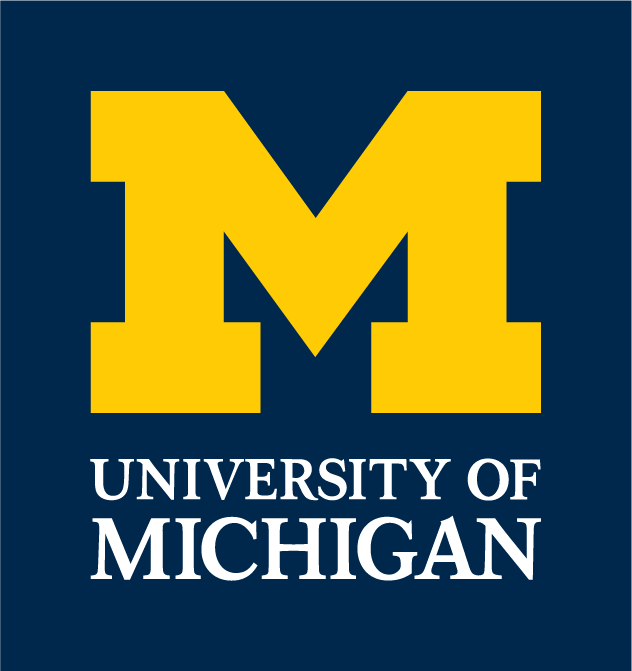
University of Michigan
- Ann Arbor, MI
Academic Highlights: There are 280+ undergraduate degree programs across fourteen schools and colleges, and the College of Literature, Science, and the Arts (LSA) enrolls the majority of students. The Ross School of Business offers highly rated programs in entrepreneurship, management, accounting, and finance. The College of Engineering is also one of the best in the country. By degrees conferred, engineering (15%), computer science (14%), and the social sciences (11%) are most popular. A solid 56% of classes have fewer than 20 students.
Professional Outcomes: Within three months of graduating, 89% of LSA grads are employed full-time or in graduate school, with healthcare, education, law, banking, research, nonprofit work, and consulting being the most popular sectors. Within three months, 99% of Ross grads are employed with a median salary of $90k. Top employers include Goldman Sachs, Deutsche Bank, EY, Morgan Stanley, PwC, Deloitte, and Amazon. Within six months, 96% of engineering grads are employed (average salary of $84k) or in grad school. General Motors, Ford, Google, Microsoft, Apple, and Meta employ the greatest number of alumni.
- Enrollment: 32,695 (undergraduate); 18,530 (graduate)
- Cost of Attendance: $35,450 (in-state); $76,294 (out-of-state)
- Median SAT: 1470
- Median ACT: 33
- Acceptance Rate: 18%
- Retention Rate: 97%
- Graduation Rate: 93%
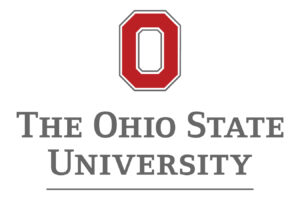
The Ohio State University — Columbus
- Columbus, OH
Academic Highlights: There are 200+ undergraduate majors and 18 schools and colleges housed within OSU. Business sees the greatest percentage of degrees conferred at 18% followed by engineering (15%), health professions (10%), and the social sciences (9%). It makes sense that so many flock to the business and engineering schools as they are among the highest-rated undergraduate programs in their respective disciplines. 40% of sections enroll fewer than 20 students, and approximately 20% of students gain research experience.
Professional Outcomes: Upon receiving their diplomas, 56% of Class of 2022 graduates were entering the world of employment while 17% were already accepted into graduate or professional school. Hordes of Buckeyes can be found at many of the nation’s leading companies. More than 2,000 alumni work for JPMorgan Chase, more than 1,000 are employed by Amazon, and more than 600 work for Google and Microsoft. Of the grads who directly matriculate into graduate or professional school, many continue in one of OSU’s own programs.
- Enrollment: 45,728 (undergraduate); 14,318 (graduate)
- Cost of Attendance: $27,241 (in-state); $52,747 (out-of-state)
- Median SAT: 1340-1450
- Median ACT: 29-32
- Acceptance Rate: 53%
- Retention Rate: 94%
- Graduation Rate: 88%

University of Wisconsin – Madison
- Madison, WI
Academic Highlights: There are 230+ undergraduate majors offered across eight schools and colleges, including the top-ranked School of Business and College of Engineering as well as the College of Letters and Science, the College of Agricultural and Life Sciences, and the Schools of Nursing, Education, Pharmacy, and Human Ecology. Undergrads can expect a mix of large and small classes, with 44% of sections enrolling fewer than 20 students. Business (18%), biology (12%), the social sciences (11%), and engineering (10%) are most popular.
Professional Outcomes: In a recent year, 46% of job-seeking grads graduated with an offer. Top employers included UW-Madison, Epic, Kohl’s, Oracle, Deloitte, and UW Health. Across all graduating years, companies employing 250+ alumni include Google, Target, Microsoft, Amazon, Apple, PwC, Accenture, and Meta. 28% of recent grads enrolled directly in graduate/professional school; the majority stayed at UW–Madison while others headed to Columbia, Northwestern, and Carnegie Mellon. The university is the top producer of Peace Corps volunteers.
- Enrollment: 37,230 (undergraduate); 12,656 (graduate)
- Cost of Attendance: $28,916 (in-state); $58,912 (out-of-state)
- Median SAT: 1440
- Median ACT: 30
- Acceptance Rate: 49%
- Retention Rate: 94%
- Graduation Rate: 89%
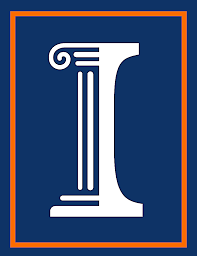
University of Illinois at Urbana-Champaign
- Champaign-Urbana, IL
Academic Highlights: Eight of UIUC’s fifteen schools cater to undergraduate students. There are 150 academic programs offered, including those at the acclaimed Grainger College of Engineering and Gies College of Business. In sheer volume of degrees conferred, engineering and business/marketing are tied at 19%, followed by the social sciences (9%) and psychology (6%). 39% of sections are capped at 19 students. 29% of undergraduates work with a faculty member on a research project; another 22% have some type of fieldwork, practicum, or clinical experience.
Professional Outcomes: 95% of the members of the Class of 2022 landed at their next destination within six months of graduation, with 38% matriculating directly into an advanced degree program. 57% were employed full-time; the most popular sectors were finance, consulting, healthcare, electronics, and education. Corporations landing the most recent Illini grads were KPMG, Deloitte, Epic Systems, EY, PwC, and Amazon. The average salary across all Class of 2022 majors was an extremely solid $75,000.
- Enrollment: 35,120 (undergraduate); 21,796 (graduate)
- Cost of Attendance: $35,926-$41,190 (in-state); $55,386-$63,290 (out-of-state)
- Median SAT: 1440
- Median ACT: 32
- Acceptance Rate: 79%
- Retention Rate: 93%
- Graduation Rate: 85%

Boston University
- Boston, MA
Academic Highlights: In total, the university offers more than 300 programs of study, 100+ of which are distinct undergraduate degrees spread across ten schools/colleges. Many classes at BU are reasonably small—60% contain fewer than twenty students; only 19% contain more than forty. The student-to-faculty ratio is 11:1. The greatest number of degrees are conferred in social sciences (16%), business/marketing (15%), communications and journalism (15%), biology (11%), engineering (9%), and health professions/related sciences (7%).
Professional Outcomes: Six months after graduation, 90% of BU grads have found their way into the world of employment or full-time graduate study. Across all graduating years, companies employing more than 350 BU alums include Google, Oracle, Accenture, IBM, and Amazon Web Services. Of the one-quarter of grads who move directly into graduate school, many are welcomed onto the campuses of elite graduate programs. For example, engineering students found new academic homes at MIT, Stanford, Carnegie Mellon, and Columbia.
- Enrollment: 18,459
- Cost of Attendance: $86,363
- Median SAT: 1430
- Median ACT: 32
- Acceptance Rate: 14%
- Retention Rate: 94%
- Graduation Rate: 89%
We hope you have found our list of the Best Colleges for Astronomy and Astrophysics to be useful and informative as you continue your college search process. We also invite you to check out some of our other resources and tools including:
- AP Score Calculators
- SAT Score Calculator
- ACT Score Calculator
- Best Summer Programs
- College List Building Tool


